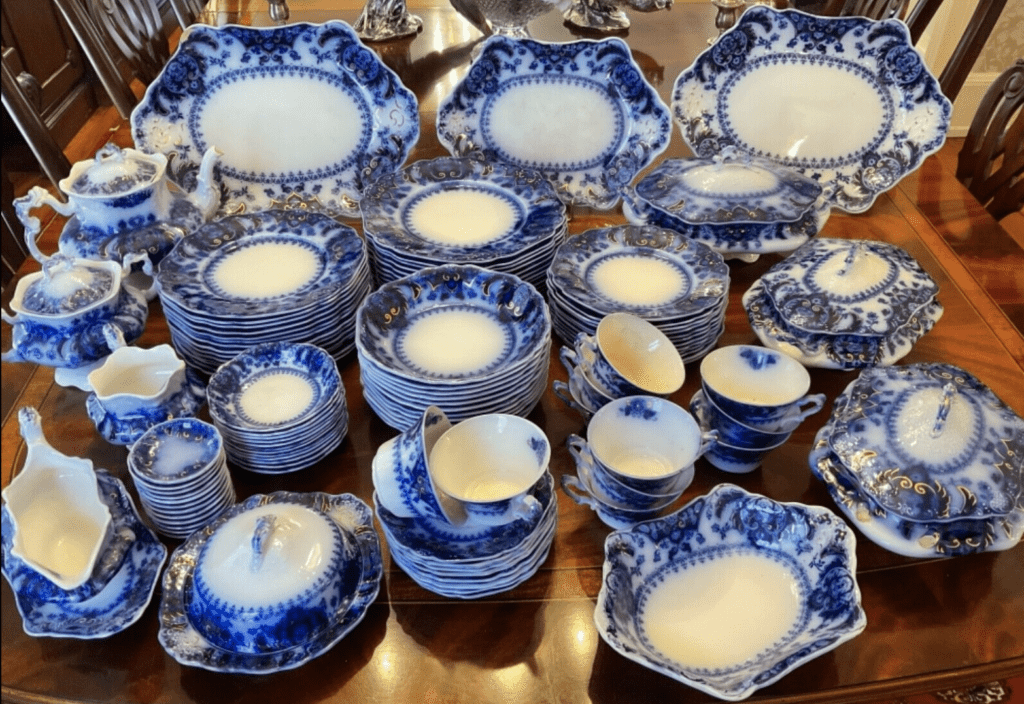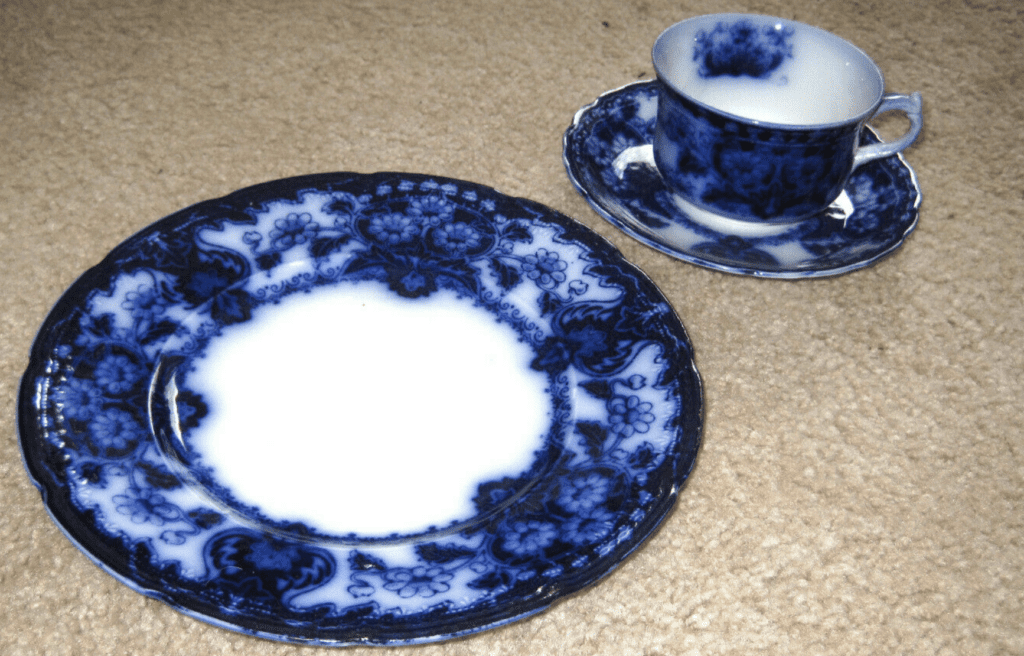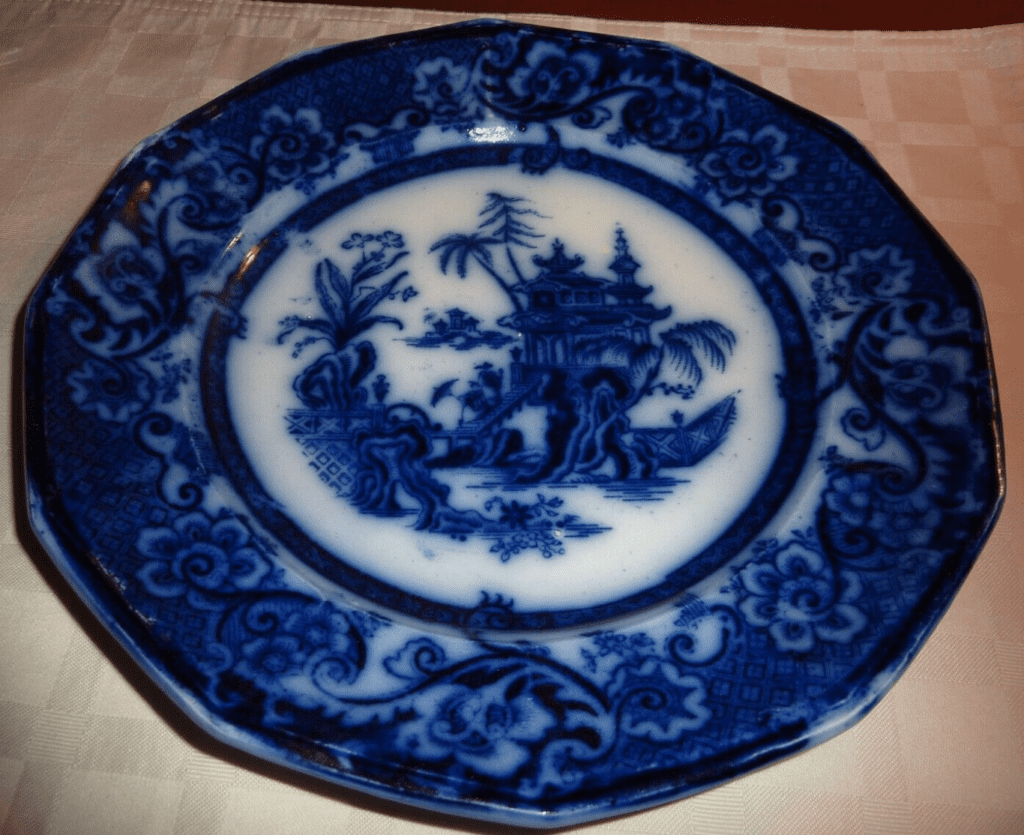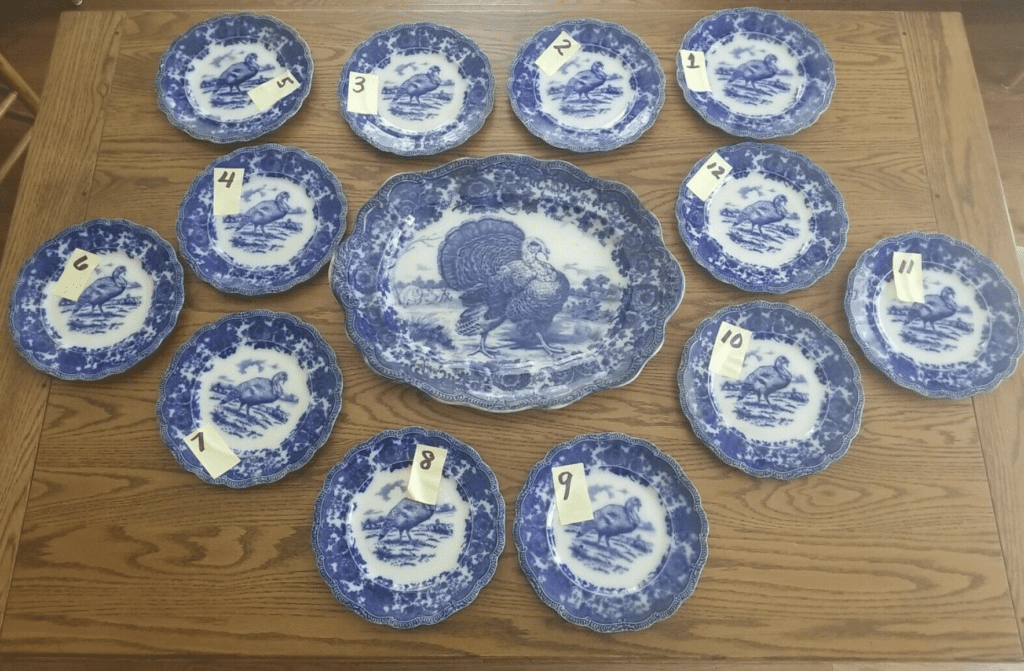Though the day when each house has its own fine china set is dwindling, china is still considered a unique and important collectible item, particularly antique china. Flow Blue is one of the most distinctive and easily recognizable categories of antique collectible china.
Flow Blue china can be identified by its design, manufacturer, and year of production. Known for its distinct blurred cobalt-blue design, Flow Blue china is a type of antique collectible that originated in the late Regency era in England and continued to be popular throughout the Victorian era.
In this guide, we’ll help you take the first steps toward identifying your Flow Blue china.

What is Flow Blue?
Flow Blue is a type of china that has its origins in England during the late Regency era. This era is often associated with high standards of elegance. Food was an important part of this elegance, particularly for the upper class, and having fine dinnerware was essential to this elegant image. For this reason, fine Chinese porcelain (which later became known simply as “china”) was a common import during the Regency era.
Seeking to take advantage of this boom in dinnerware imports, manufacturers in England sought to produce “china” that mimicked fine Chinese porcelain in both design and functionality. However, in seeking to expedite the process of china production, English manufacturers sought to waive the Chinese tradition of each piece being hand-painted through a process called transfer decorating.
Transfer decorating was a means of mass-producing china designs by using a metal plate “template” that would then be pressed onto porcelain using paint and tissue paper.

This style of mass production worked great, except for one small problem: the process of manufacturing and transfer decorating left a blue “flow” or smear on the white parts of the porcelain. It appears that this was initially an accident, though some manufacturers claimed that it was done on purpose. Nonetheless, this new “Flow Blue” china became increasingly popular, especially among the middle- and working classes in England, who couldn’t afford imported Chinese porcelain, as well as in America.
Production of Flow Blue china was prolific from the late Regency era (around 1835) until after the Victorian era (sometime between the 1920s and 1940s). At this point, graniteware and other types of pottery became more affordable, and Flow Blue decreased in popularity, allowing it to become an antique collectible due to its unique design and history.
Is Flow Blue Transferware?
Flow Blue china is a special instance of transferware. Transferware is a special name for any type of pottery that uses transfer decorating, which is how Flow Blue china is decorated.
How to Identify Flow Blue China
Since Flow Blue is more of a style than anything else, identifying Flow Blue china is not particularly difficult. Though there are different designs of Flow Blue, Flow Blue is identified by its characteristic blue smear. Anything with the blue flow design is technically Flow Blue.

How Can You Tell Real Flow Blue?
Modern-day reproductions (repros) of Flow Blue are not difficult to find. A Google or Etsy search will give you ample options to choose from. However, there are times when you’ll want to verify whether or not Flow Blue is original (from the late 19th century) or a repro.
To tell whether Flow Blue is an original or a repro, ask yourself the following questions:
- Is it fully glazed? Original Flow Blue china tends to be fully glazed, top and bottom, while repros frequently have an unglazed bottom.
- What color blue is it? Original Flow Blue was made with cobalt, so even after many years, it will have a striking cobalt blue color to it. On repro Flow Blue, manufacturers use different-colored blues, causing them to have an inky-blue or greenish-blue tint.
- What size is the maker’s mark? You can think of the “maker’s mark” like a brand stamp. In original Flow Blue, maker’s marks tend to be smaller, only about 1 inch wide. On repros, maker’s marks are generally between 2-3 inches wide.
Following the above guidelines should give you a pretty good idea of whether or not your Flow Blue is an original or a repro. You can also Google the manufacturer. Googling the plate design could offer further insights. These searches can lead to a wealth of specific information which could help you identify your Flow Blue. If you need an ever-deeper dive, there are books available that get into specific designs of Flow Blue over the years that will provide even more information.

Different Flow Blue Designs
While the number of actual Flow Blue designs is limitless, designs can be categorized in a few different ways. Flow blue china design is typically categorized into three separate periods.
The three periods of Flow Blue are early (1830s-1860s), middle (1860s-1880s), and late (1880s-1920s) periods.
The early period is characterized by china that seeks to imitate the Chinese porcelain design of this era. Flow Blue china pieces from this era have darker blues that cover more of the china.

In the middle period, English china began to develop its own style and also began to use less blue, so a greater blend of white could be seen.
Finally, in the late period, the least amount of blue is seen, though it remains strikingly cobalt, and the English style continued to increase in popularity.

Where Can I Buy Flow Blue?
Flow Blue china is not particularly difficult to find; a simple Google search for “flow blue china” returns over 4 million results. If you’re simply looking for any kind of Flow Blue, you’ll have ample options that should be easy to purchase.
If you’re looking for antique china, it gets a little more complicated. How can you know for sure that if you buy something listed as “antique,” it will actually be antique? The simple answer is that it’s extremely difficult to know with certainty. You can do your research according to the guidelines above, and this will hope you feel more confident in knowing whether or not something is antique.
The three most common places that appeared when we were searching for Flow Blue to buy were eBay, Etsy, and Replacements Ltd. As with all secondhand-selling sites, be careful with any purchases. Replacements Ltd. claims to grade and properly classify each piece it sells, but their pieces tend to cost more.

